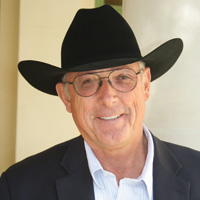 Larry Hancock
Larry Hancock
Muleshoe, Texas
A dairy pioneer on the Texas High Plains, Prairie View Dairy milks 4,200 Holsteins.
**Extended comments highlighted in blue
Milk quality is top of our list at Prairie View Dairy. Udder care and mastitis control are main contributors to that quality and something we deal with on a daily basis.
We strive to have clean, dry cows enter the milk parlor. Prairie View 1, 2 and 3 are drylot dairies, so corral maintenance is a necessity. The pens are cleaned out three times a year, and we apply the fertilizer to our own fields as well as neighboring farms.
The effort is rewarded when the weather turns wet because it allows the pens to dry much faster. We also scrape and harrow the pens every other day to keep the manure soft and dry, helping to make comfortable bedding for the cows. Barn 3 has a flush system to help keep the area cleaner where the cows stand and eat.
We have strict milking procedures in each of our three milk barns to keep udders in good condition. Each barn is a little different due to the number of cows milked and the size of the facility.
All three barns have wash pens where the cows are washed and allowed to stand to dry before entering the milk parlor. When they do enter the parlor, cows are prepped. If the milk is abnormal, the cow is separated from the string and milked into a single tank.
The milk is sampled and lab tested to determine the type of mastitis and treatment that will be done. The treatment is recorded and the withdrawal time is monitored.
If the milk is normal, the cow is predipped and wiped clean with an individual cloth towel before the machine is attached. Barn 1 uses a foam predip while barns 2 and 3 use spray predips. After milking, each cow is postdipped using a barrier dip that is applied from a cup with brush sides that measure the amount of iodine applied. The cow is returned to the pen, where the feed has been pushed up to encourage her to stand and eat a while before lying down.
We also follow a strict vaccination program. When a cow is dried off, she is treated with a dry tube (we use Quartermaster). Cows are vaccinated against coliform mastitis at dryoff, when moved to the springer pen three weeks before calving and again three weeks after calving.
Lastly, we have a milker incentive program that directly addresses udder health and mastitis. Monthly bonuses are awarded to our managers and milkers if SCC and bacteria counts meet our goals for that pay period.
We have found that when everyone is working together our results improve, we have fewer clinical cases in our herd and we produce a better-quality product.
| Hancock's Most Recent Prices | |
| Milk (3.6% bf, 3.16% prt) | $15.78/cwt. |
| Cull cows | $76/cwt. |
| Springing heifers | $1,400-$1,500/head |
| Alfalfa hay (milk cow) | $325/ton contracted |
| Whole cottonseed | $318/ton |
| Cottonseed meal | $326/ton |
| Corn | $267/ton |

 Larry Hancock
Larry Hancock






